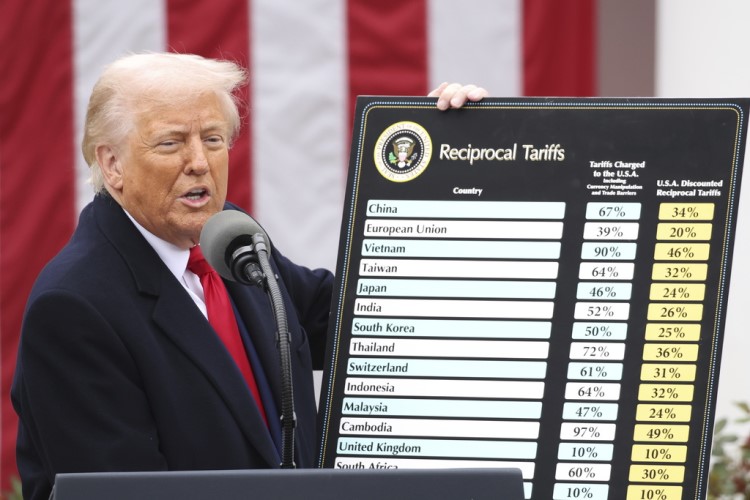
April 9, 2025
Trump’s Tariff Formula Is Still Wrong. Maybe That’s Why No One Will Admit They Created It.
Last Friday, we showed that the Trump Administration’s tariff formula contained an error that made its calculated tariffs up to four times too large. The entire premise of the administration’s approach—that a country’s tariff and non-tariff trade barriers can be derived solely from the bilateral trade balance with that country, and that the goal of…

April 8, 2025
Discussing President Trump’s tariff formula miscalculation: Corinth on CNN News Central
Kevin Corinth, Deputy Director of the Center on Opportunity and Social Mobility, discusses President Trump’s tariff formula alongside AEI’s Stan Veuger on CNN News Central.

April 8, 2025
Public Support of Health Insurance Enrollment
Health insurance subsidies, especially as provided by Medicaid, are under scrutiny as Republicans scout for savings to make way for their tax agenda. However, instead of selective cuts, Congress should simplify the enrollment rules, treat individuals with similar incomes more equally regardless of where they get their coverage, and implement reforms which will lower costs…

April 8, 2025
Could A Higher Endowment Tax Pressure Elite Schools To Expand?
Congressional Republicans are considering a significant hike in the excise tax on the endowments of rich universities as part of a broader tax reform effort. Most private universities with more than $500,000 in endowment assets per student are subject to a 1.4 percent excise tax on their net investment income. Some Republicans have proposed raising that tax rate to…

April 7, 2025
Discussing President Trump’s tariff formula: Corinth on ‘Bloomberg Insight’
Kevin Corinth, Deputy Director of the Center on Opportunity and Social Mobility, discusses how President Trump’s formula to calculate tariffs was incorrect on Bloomberg TV’s ‘Bloomberg Insight.’

April 4, 2025
President Trump’s Tariff Formula Makes No Economic Sense. It’s Also Based on an Error.
President Trump on Wednesday announced tariffs on practically every foreign country (and some non-countries), ranging from a 10 percent minimum all the way up to 50 percent. The economic fallout has been dramatic, with the stock market losing nine percent of its value (based on the S&P 500 index at the time of writing) and…

April 4, 2025
How One State Improved Its NAEP Scores
The most recent National Assessment of Educational Progress results had a lot of bad news, but there were some scattered bright spots. Louisiana was one of them. In fact, the Pelican State was the only state in the nation that outperformed its pre-pandemic 4th grade reading scores on the 2024 NAEP. Over the past two…

April 3, 2025
The dangerous myth that poverty is the cause of child abuse
Why does child abuse happen? A new public service announcement says most people think it’s a “bad parent problem,” but the ad suggests “the root causes may be different than you think.” This message from Prevent Child Abuse America goes on to explain that child abuse is the result of families’ lack of financial resources — a…

April 3, 2025
Trump’s Tariffs Are a Historic Tax Hike
If implemented, the tariffs announced yesterday by President Trump would constitute the largest tax increase since the 1968 levies to fund the Vietnam War. The details will matter, but my back-of-the-envelope calculation suggests that the tariffs — which are taxes on imported goods — could be as large as 2 percent of annual GDP. This tax increase…

April 1, 2025
Mayoral Candidate Zohran Mamdani’s Dangerous Radicalism on Child Welfare
Socialist state assemblyman Zohran Mamdani has made a splash in the race for New York City mayor. A relentless social media campaign has helped him raise big dollars, despite his long-shot odds against incumbent mayor Eric Adams and former governor Andrew Cuomo. Mamdani has also adopted a platform of terrible ideas. His campaign materials portray him as a Robin…